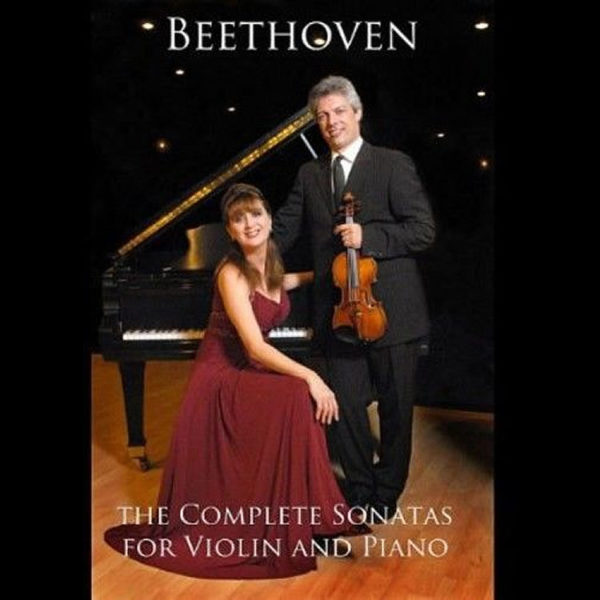View/download liner notes (PDF)
A multi dimensional reading of the the classical repertoire’s greatest masterpieces
Violinists and pianists come to the Beethoven duo sonatas from very different places. To violinists, the ten sonatas are as fundamental to their literature as the Bach unaccompanied Sonatas and Partitas: essential repertoire of grandeur, technical challenge, and consummate workmanship. Those violinists who play in orchestras as students gain further familiarity with the language of Beethoven through performance of his symphonies, overtures, and other orchestral works.
Pianists have another context: Beethoven’s 32 piano sonatas, which are bread and butter to the keyboard repertoire. The difference is that pianists are very likely to have played a half dozen or more of the Beethoven solo sonatas before collaborating on one of the duo sonatas. That continuum, the perspective of his evolution as a composer for keyboard, informs every pianist’s approach to Beethoven’s 10 sonatas for violin and piano. They know he was likely writing for himself, and that this is no accompaniment part.
Both Gary Levinson and Daredjan ‘Baya’ Kakouberi have played Beethoven’s music their entire lives. Still, each found this collaboration a unique and illuminating process. Kakouberi had previously played only three of the duo sonatas. “Learning them all, immersing myself in this music, was a totally different experience – almost like tackling all 32 of the piano sonatas. Certainly it is a comparable body of work. The experience has been amazing.”
Levinson observes, “Because Baya’s frame of reference was the piano sonatas, she had a fabulous approach. There are so many places in which the violin is in the background rather than foreground. The integrity of balance, of musical exchange, of articulation, phrase lengths – all this has been fundamental to our thinking. I would liken it to theater, where a skillful director uses light and shadows to draw attention to certain areas of the stage. We are always seeking to challenge the ear on a three-dimensional plane.”
Levinson and Kakouberi are experienced chamber players. Having performed Beethoven’s piano trios and other chamber works, they bring added knowledge to this project. They work from the Henle Urtext edition and share a commitment to observing Beethoven’s instructions in the score. They recognize the ways in which Beethoven, however specific he was, still left interpretive latitude. An overall sense of pacing has governed each decision about tempo, pulse, how much ritardando, the length of a fermata.
“Beethoven’s music is not static; it lives, it breathes,” declares Levinson. “The sonatas never become boring, not in practice, not in rehearsal, not in performance. Our goal is to bring the listener into the immediacy of this music: the ebb and flow, subtlety, fury, resignation, Beethoven’s marvelous puns. Our goal has been to make this recording feel like a performance, with all the spontaneity that occurs when the audience and the musicians are in the same room.”
Ms. Kakouberi adds, “Beethoven himself was a brilliant combination of composer and performer in one person. That has helped me, as a performer and interpreter, to better understand his intentions and refine my artistic self, as a chamber player and as a pianist.” Kakouberi’s and Levinson’s commitment to this music, their thoughtful consideration to tempi, pacing, and the architecture of these sonatas, lends immediacy and revelation to the listening experience.



